The Porsche 911 GTS has long been somewhat of an enigma. You can ask for all the options on a Carrera S and write a big check or buy a GTS and get all those options for thousands less. But aside from being a good value proposition, what’s so special about a regular 911 with bits you can already get on virtually every other 911 variant—but with more power? Allow me, then, to propose this: You get the 2022 Porsche 911 Carrera GTS because it is the sweet spot of all 911s.
On the surface, a GTS doesn’t look like much more than a Carrera S with all the option boxes ticked (the Carrera S being the floor of this comparison purely because it's the lowest-trim 911 that you can also get with the enthusiast's choice of a manual transmission). However, that perception started to change with the 991-gen GTS, which carved out its own niche in the 911 lineup. It came within shouting distance of the pace and usability of a Turbo at a substantially better price. But it leaned toward the grand-touring side of things more so than a performance car, meaning it still wasn’t the perfect option for those looking for a higher-performance daily driver.
2022 Porsche 911 Carrera GTS: By the Numbers
- GTS base price (GTS and Targa 4 GTS as tested): $138,050 ($178,440 and $193,960)
- Powertrain: 3.0-liter twin-turbo flat-six | 8-speed dual-clutch or 7-speed manual | rear-wheel drive or all-wheel drive
- Horsepower: 473 @ 6,500 rpm
- Torque: 420 lb-ft @ 2,300 to 5,000 rpm
- 0-60: 3.1 seconds (est. in Carrera 4 GTS with DCT)
- Seating capacity: 4
- Curb weight: 3,349 pounds to 3,691 pounds
- Cargo volume: 4.66 cubic feet
- EPA fuel economy: TBA
- Quick take: More livable than a GT3 and more rewarding than a Carrera S, the GTS is the one you want.
Fast forward to the 2022 model year. The 992 GT3 has become even more hardcore with solid suspension bits and an aggressive, track-focused suspension setup that push it up well into the 991.2 RS’s range in terms of both performance and (lack of) daily usability—and leaving an even bigger gap between it and the Carrera S. And then some really smart folks in Stuttgart saw the perfect opportunity to fill that gap.
The Highlights
Before we dig too deep on my “sweet spot” assertion, let’s have a look at all the bits that upgrade the Carrera S to the GTS.
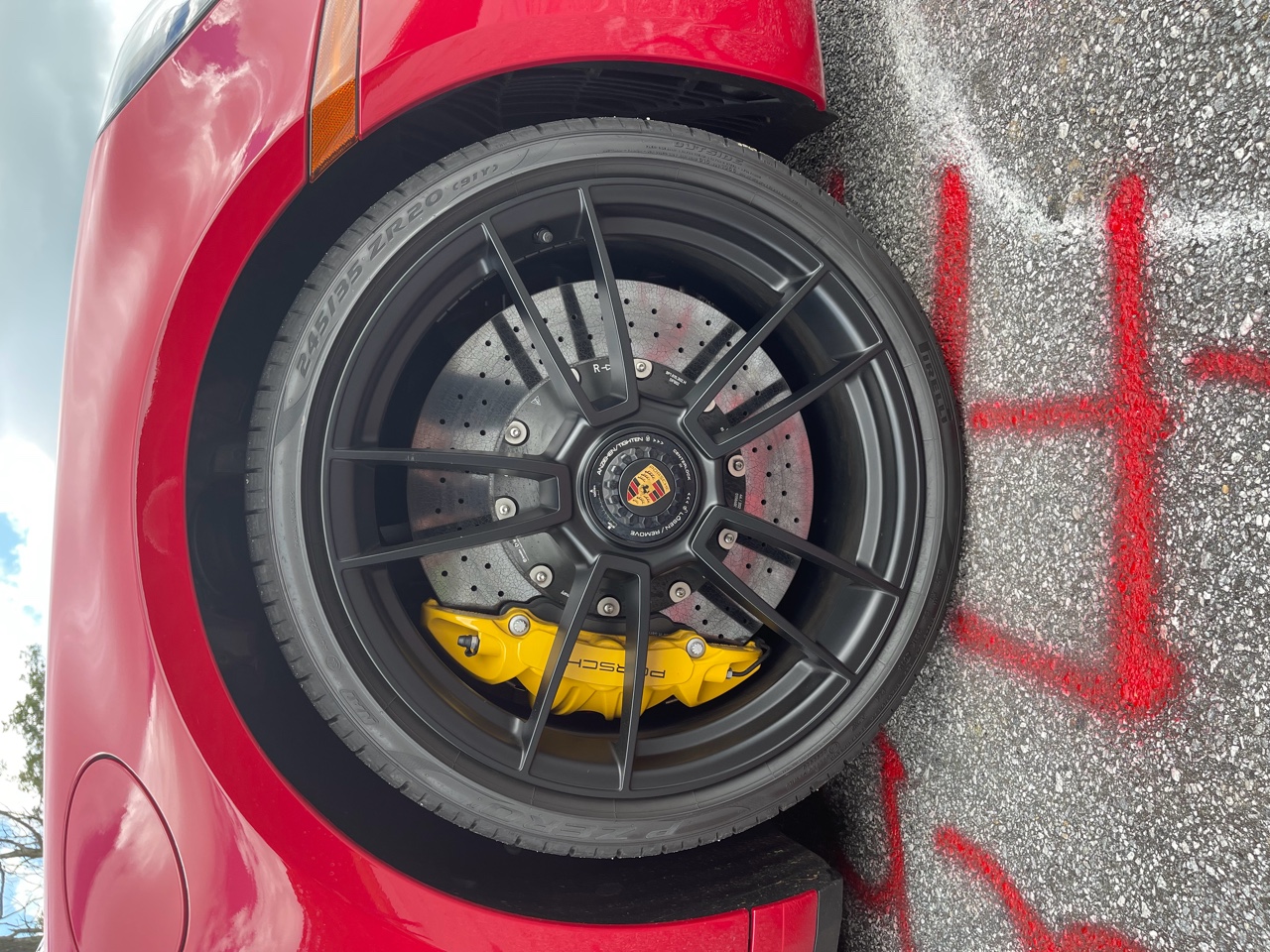
First off, the GTS comes in several flavors. The rear-wheel-drive Carrera GTS and the all-wheel-drive Carrera 4 GTS both come as a coupe or convertible. Additionally, there is the all-wheel-drive Targa 4 GTS for those who like a little open-top retro design with their sports cars.
All GTS models are powered by a 3.0-liter twin-turbocharged flat-six engine making 473 horsepower and 420 pound-feet of torque. These numbers are up 30 hp and 30 lb-ft from the Carrera S by way of an increase in boost pressure to 18.3 psi. And to make sure those around you know you’re not driving a basic Carrera S, a sport exhaust system with a new rear muffler and larger cross pipes—which give the GTS a much more aggressive note—is included as standard.
As far as styling goes, blacked-out trim bits (front spoiler lip and intakes, black surrounds for the PDLS+ headlight system and exhaust outlets) give the GTS a slightly more aggressive look over the base Carrera models. The black trim theme continues onto the interior, where the brushed aluminum trim is done in black as well. Additionally, the door handles, steering wheel, and seat centers are trimmed with Porsche’s performance Race Tex fabric (Alcantara). There’s also wireless Apple CarPlay without needing a subscription. (I’m shocked! I didn’t know this was even possible. The wonders of modern technology…)
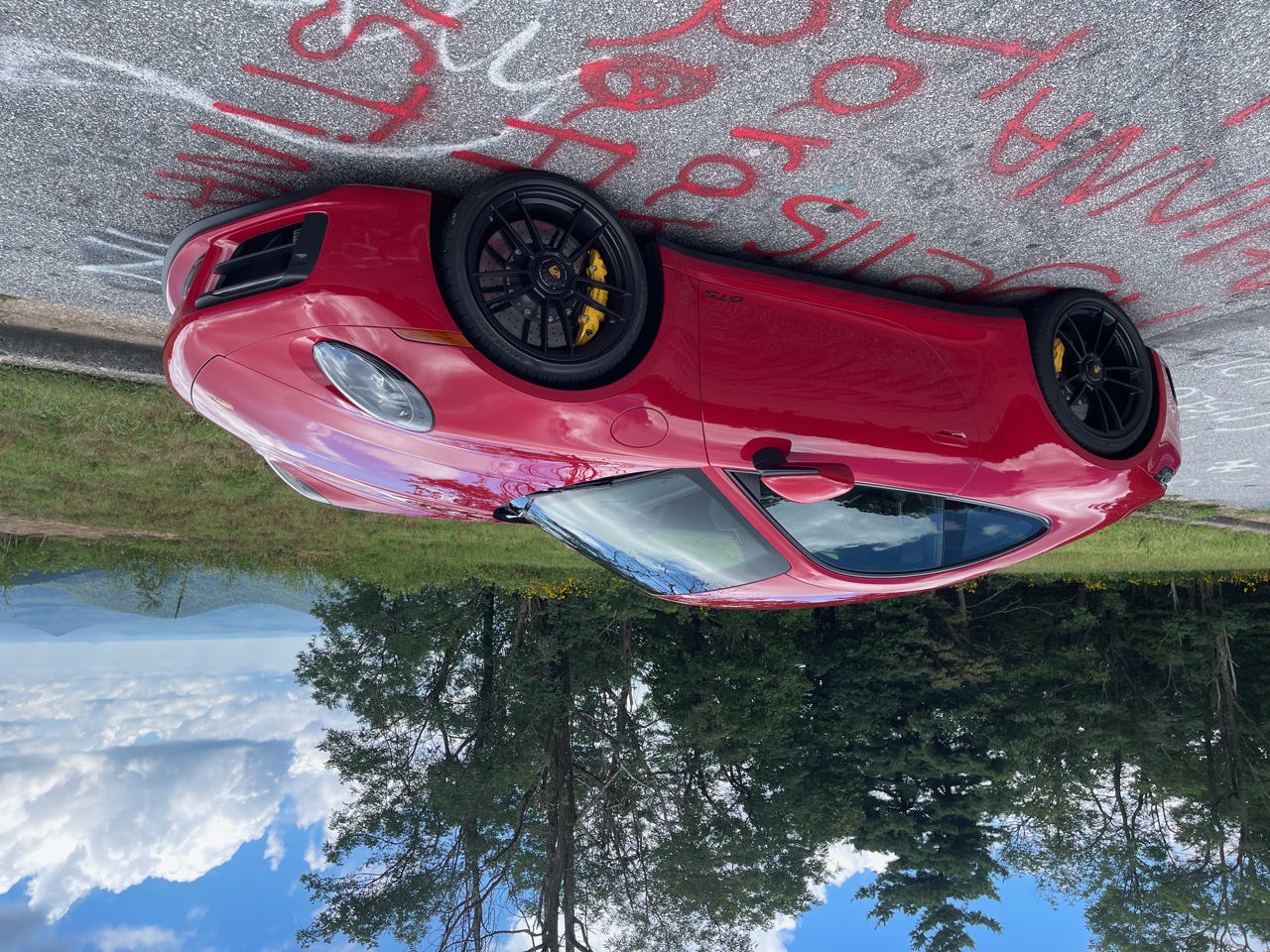
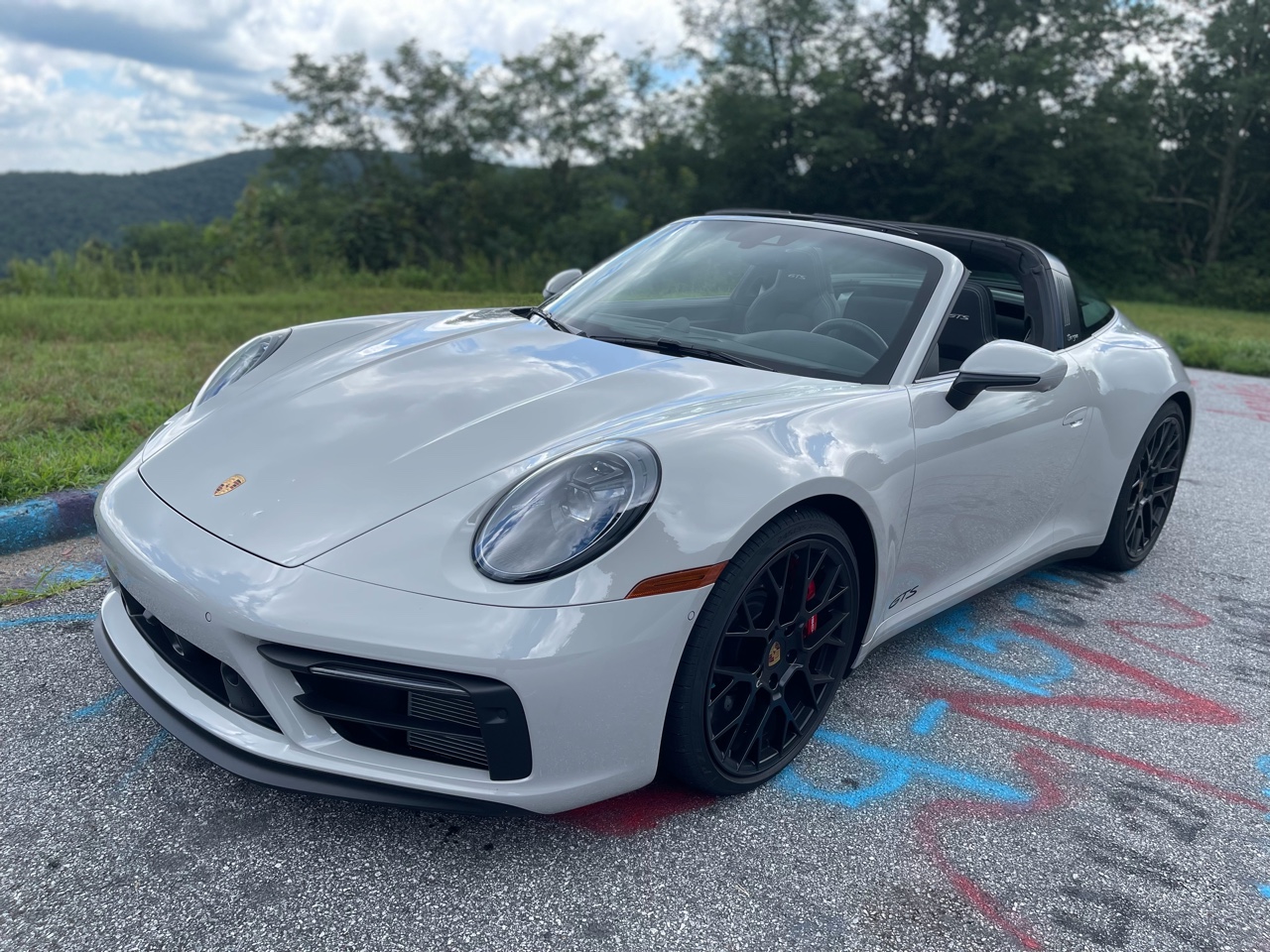
Sending power to the wheels is the standard-equipped, eight-speed PDK transmission, paired with Porsche’s PTV+ electronically controlled torque-vectoring differential. A seven-speed manual transmission is also available as a no-cost option, but with the PTV+ replaced by a mechanically locking differential. This combo is my preference—I prefer the feel of mechanical diff over the electronic one.
Both transmission options carry the same gear ratios as the rest of their 911 Carrera siblings. However, one new feature is sure to make enthusiasts happy. Porsche’s new PCM 6.0 (Porsche Communication Management) system allows for the rev-matching downshift feature to be defeated regardless of whatever drive mode you are in. (And there was much rejoicing. Hooray!)
On the suspension front, the GTS carries some model-specific parts, starting with the PASM dampers that lower ride height by 10mm. These dampers also carry helper springs whose job it is to keep pressure on the main springs to keep them seated in their perches when the wheels are unloaded. This is a feature usually seen on high-end motorsport coil-over suspension systems. Here, it heralds the GTS’s performance intentions.
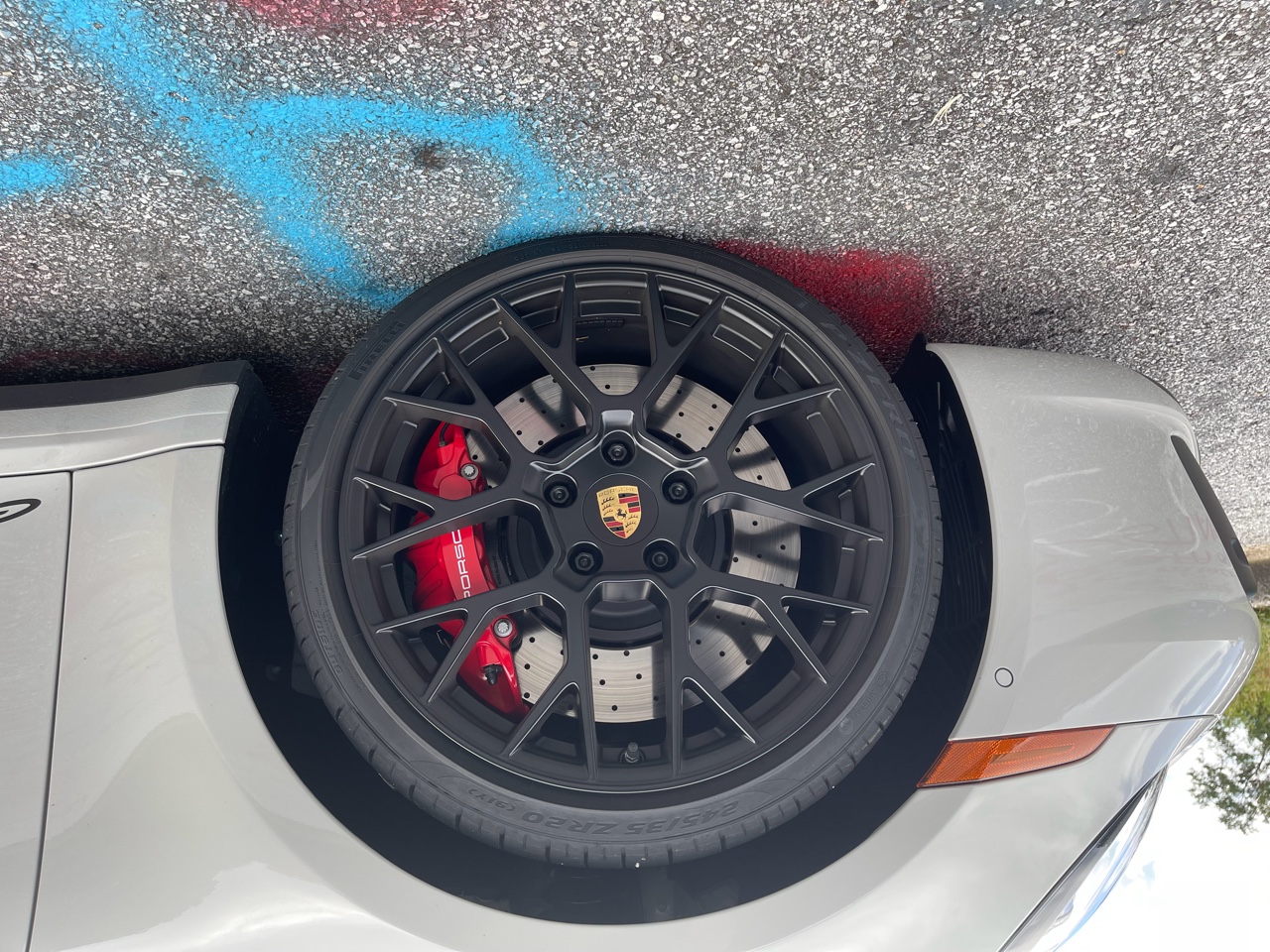
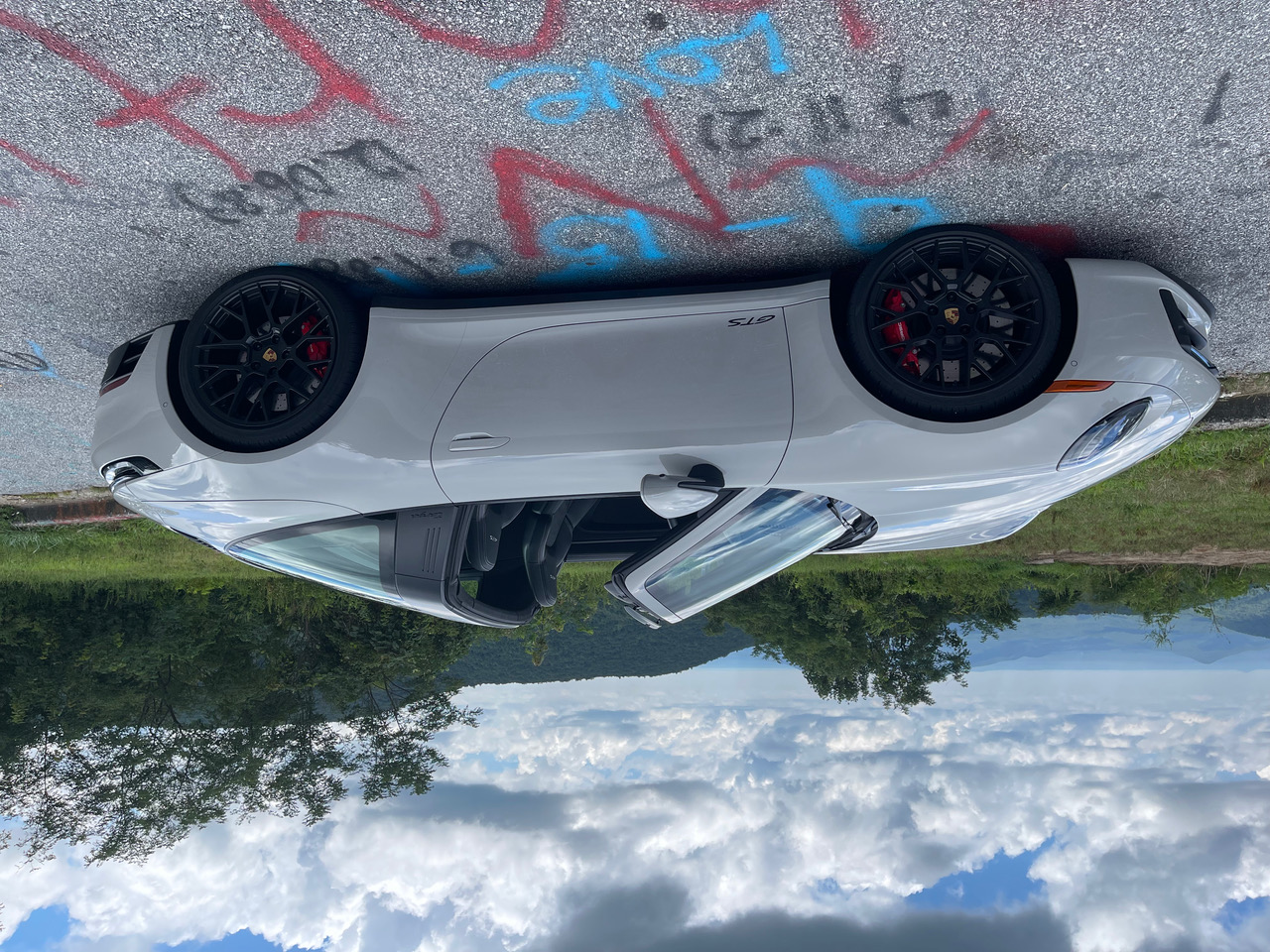
As in the 991 GTS, rear-axle steering is available as a $2,090 option. This will steer the rear wheels in the opposite direction as the fronts are facing while traveling up to 31 mph and in the same direction at speeds over 50 mph, thus increasing agility and stability.
The GTS shows it is super serious about this performance thing by copping its entire braking system from the 911 Turbo. Six-piston calipers in the front clamp down on massive 408mm by 36mm rotors (that’s a whopping 16 inches for those metrically challenged), while four-piston calipers take care of the rear 380mm by 30mm rotors. As always, Porsche Ceramic Composite Brakes (PCCB) are available as a $9,870 option. The Turbo brake system needs Turbo-type wheels to clear the calipers, so the GTS comes with the forged, satin black 20-inch front and 21-inch center-lock wheels virtually identical to the Turbo S as standard.
For those truly committed, Porsche offers an optional Lightweight Package that includes lightweight glass, a lightweight battery, a further reduction of sound deadening material, removal of the rear seats and rear floor mats, reprogramming for the rear spoiler which gives it a maximum tilt angle that is four degrees more than the Carrera models, and optimized underbody paneling for improved aerodynamics (which I am told actually produces front downforce for the first time on a GTS, as opposed to just a reduction in lift). The package also includes rear-axle steering. All of this adds up to a weight savings of a not-unsubstantial 55 pounds.
Driving Experience
So that’s all well and good, but how does all that add up to what is arguably the best of all 911 variants? How does it hit that sweet spot? Let me pontificate for a moment.
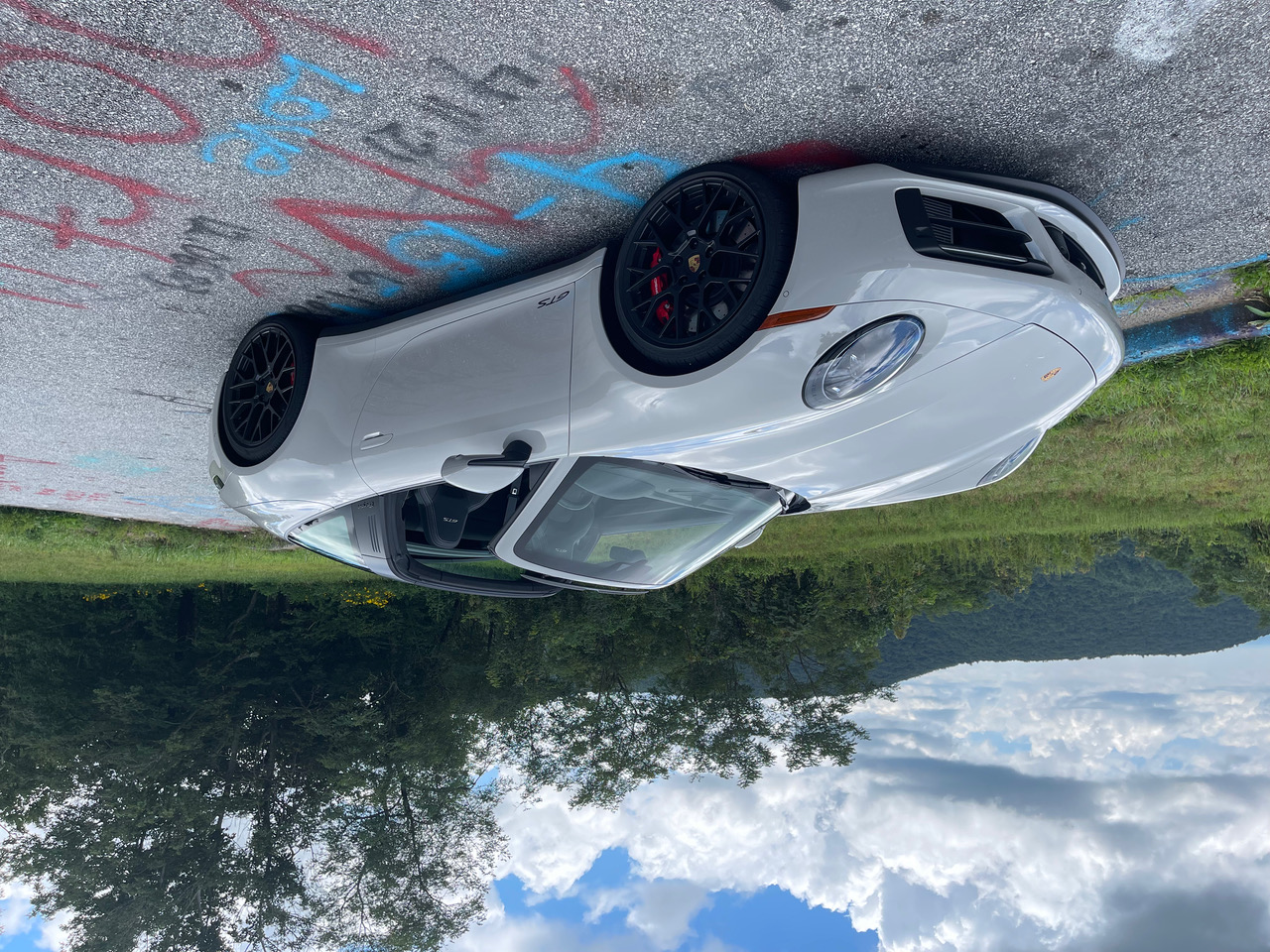
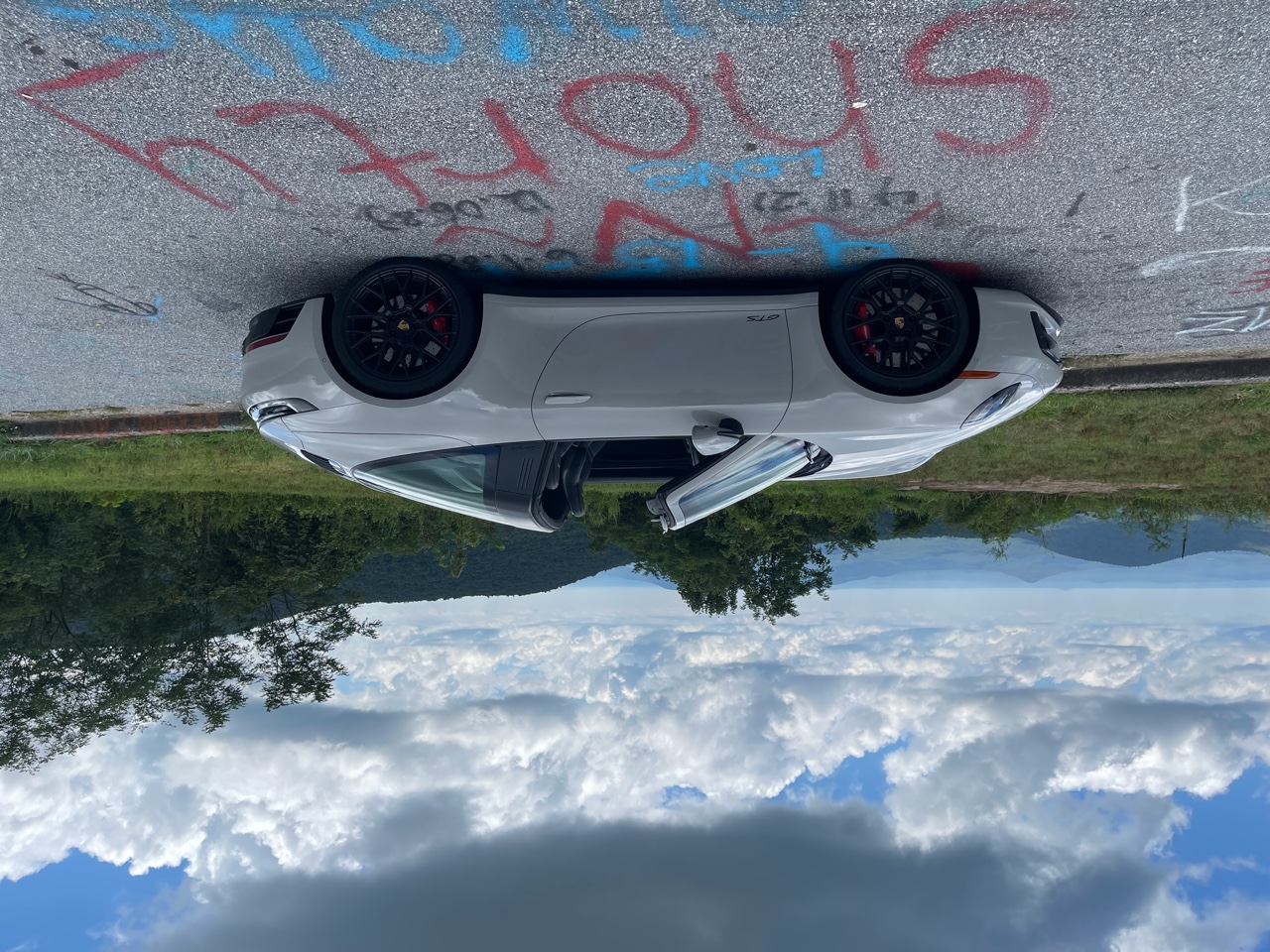
I spent a fair bit of time in the 992 GT3 in the canyons outside LA and I came to the conclusion that the GT3 is just too good. I know that sounds a bit silly. How can a car be too good? Well, when you come through a long, sweeping narrow canyon bend that you’ve never driven before, a bend with a massive drop-off to one side and a rock cliff to the other, at substantial speeds—and neither you nor the GT3 beneath you are even close to breaking a sweat—that’s when you know a car is too good. In order to come anywhere near the GT3’s limits, I would either have to do some very silly things on public roads or take it to the track. Which is exactly what I ended up doing—er, going to the track, that is.
But when I drove the GTS in the hilly backcountry roads north of Atlanta, I found it to be so much more engaging than the GT3. Not because I was going along at silly speeds, but because the GTS’s limits are a good bit lower than the GT3's. I could have fun with it without really having to worry about how I would continue to be an automotive journalist without a driver’s license (as I would, and did, in the GT3).
The roads up around the Stone Mountain area are an automotive enthusiast paradise. With miles and miles of country roads filled with seemingly endless, perfectly cambered corners, it was the ideal spot to let the GTSes stretch their legs. I say GTSes in plural, as over the course of the day I spent time in both the coupe and Targa 4 model.
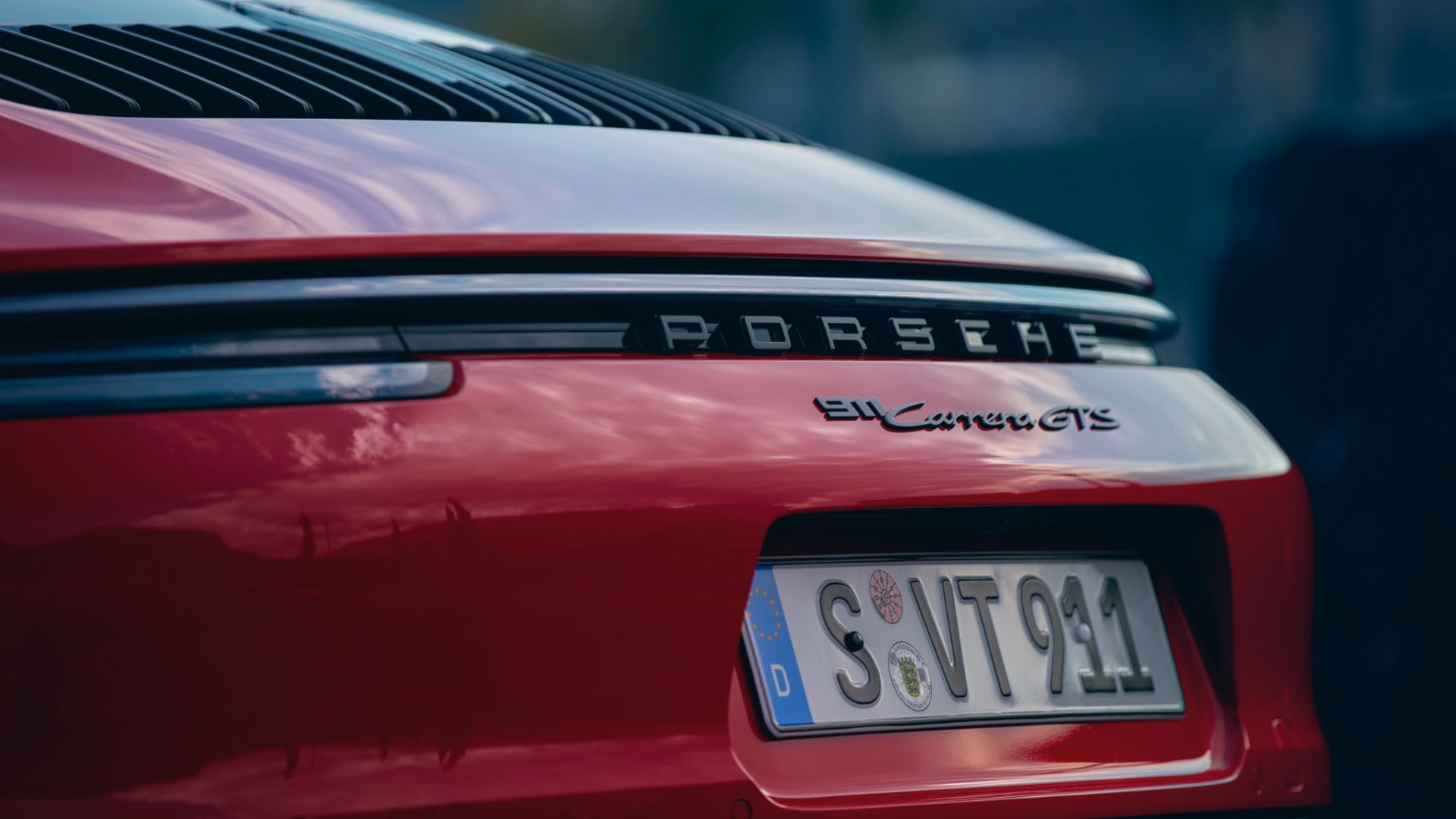
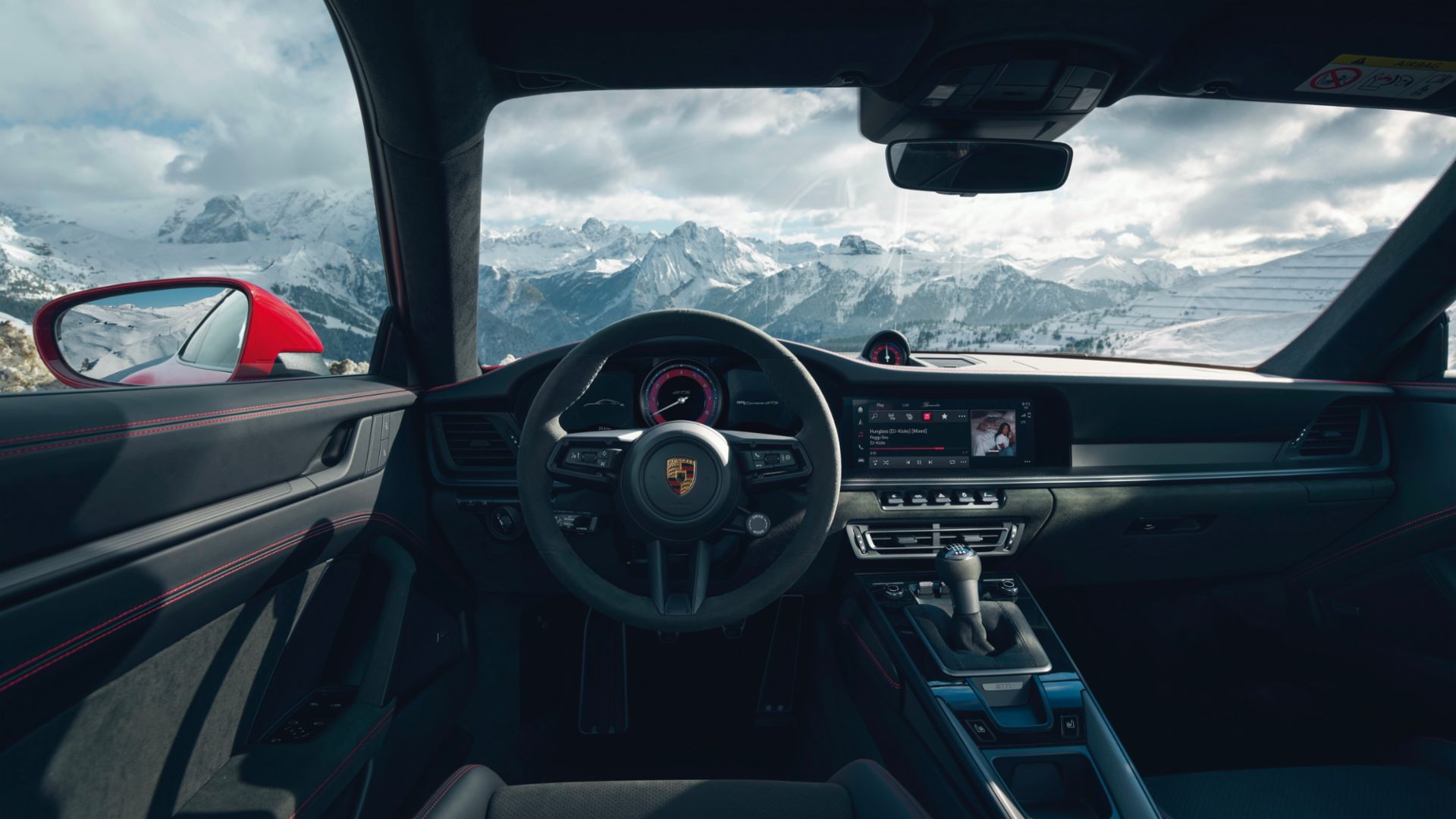
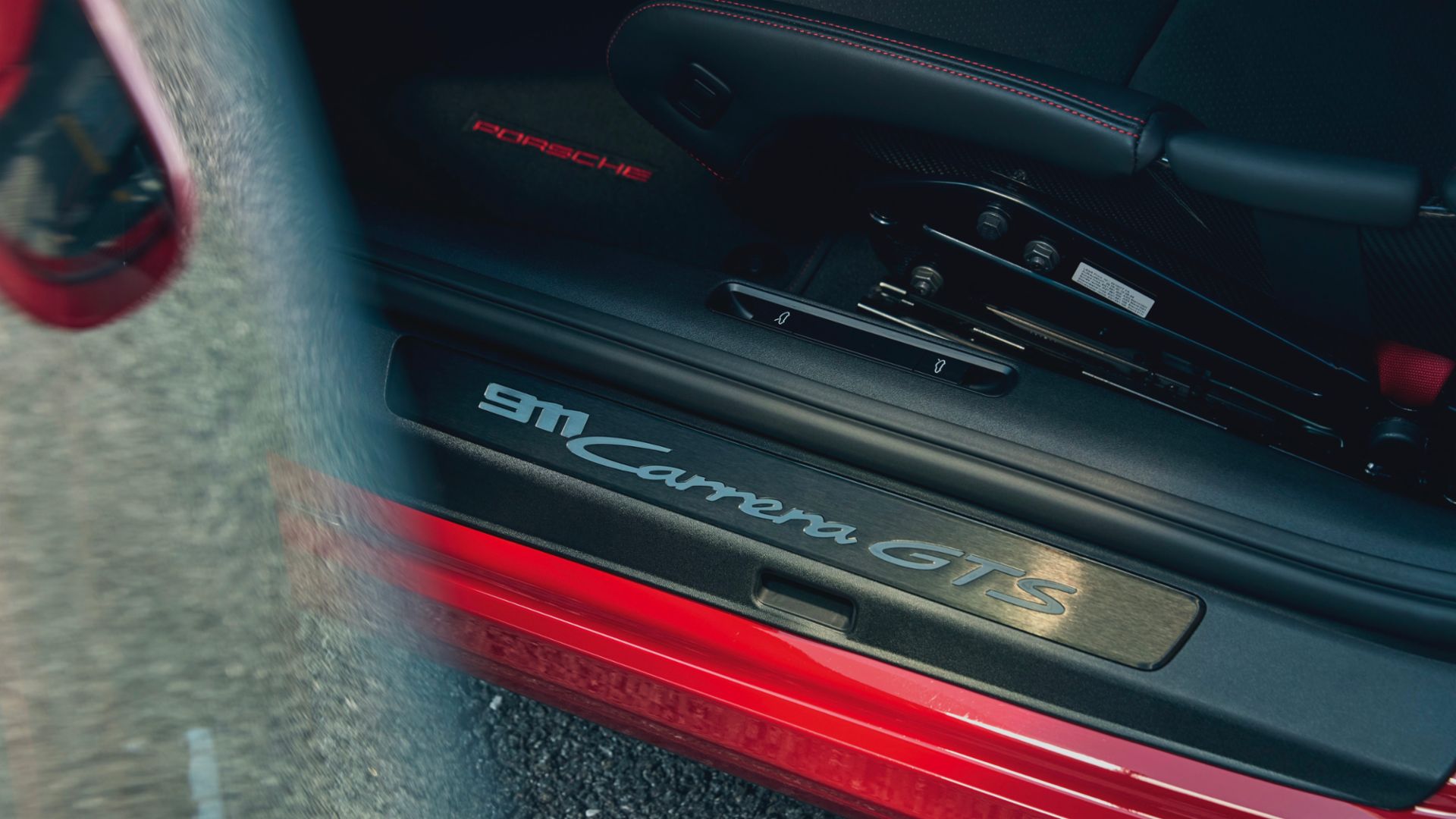
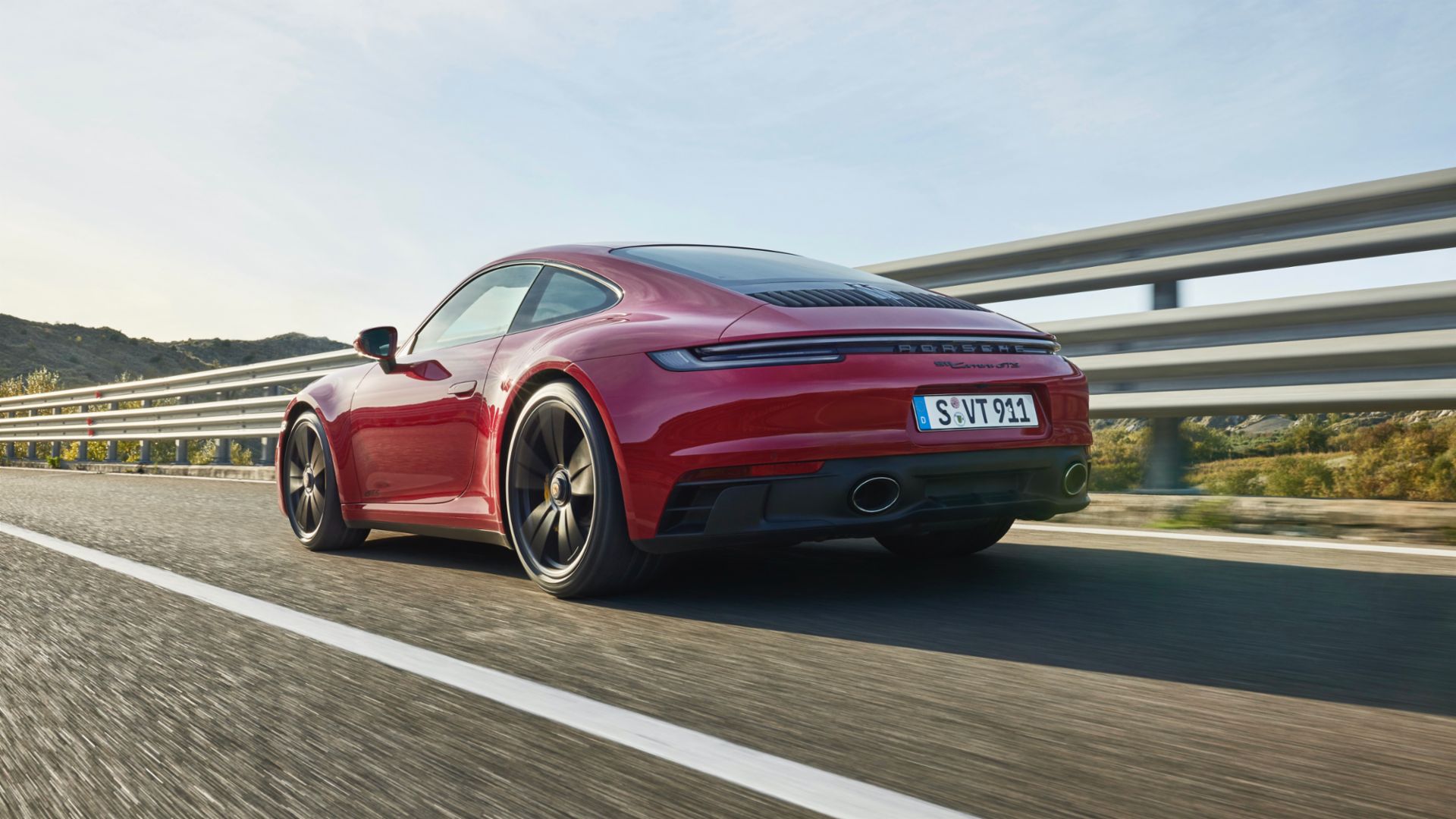
The coupe was my first weapon of choice and it did not disappoint. Up the twisty mountain roads, the coupe was just awesome to drive hard. Porsche engineers have worked suspension magic with the car. Its optional rear-wheel steering allowed a much quicker, sharper turn-in than expected, and the turbocharged motor pulled with massive grunt coming out of some seriously steep switchbacks. There was never a time that I felt that I needed more power or grip. The GTS has just enough of both to make the car seriously quick but so much fun to drive close to the limit.
My only real gripe was with the carbon seats. Full bucket seats that look amazing in the car feel less amazing when you’ve spent several hours in them. This isn't exclusive to the GTS, as these same seats are optionally available throughout the 911 lineup. They feel just as tortuous in all those cars, too. Maybe they work for you sub-six-foot types, but they just don’t work for me. The good news is that they are an option and if you don’t get them you can save yourself $5,900 (which will help cover the costs for all the tires you’ll burn through doing drives just like this one).
The coupe was equipped with Porsche’s seven-speed manual. I don’t find it quite as sharp as the old six-speed in the 997 but it’s still a really good and engaging transmission that makes it a pleasure to row through the gears. But with the amount of torque that’s on tap from the twin-turbo engine sitting out back, the GTS will happily run around in one gear all day long, but there’s no fun in that.
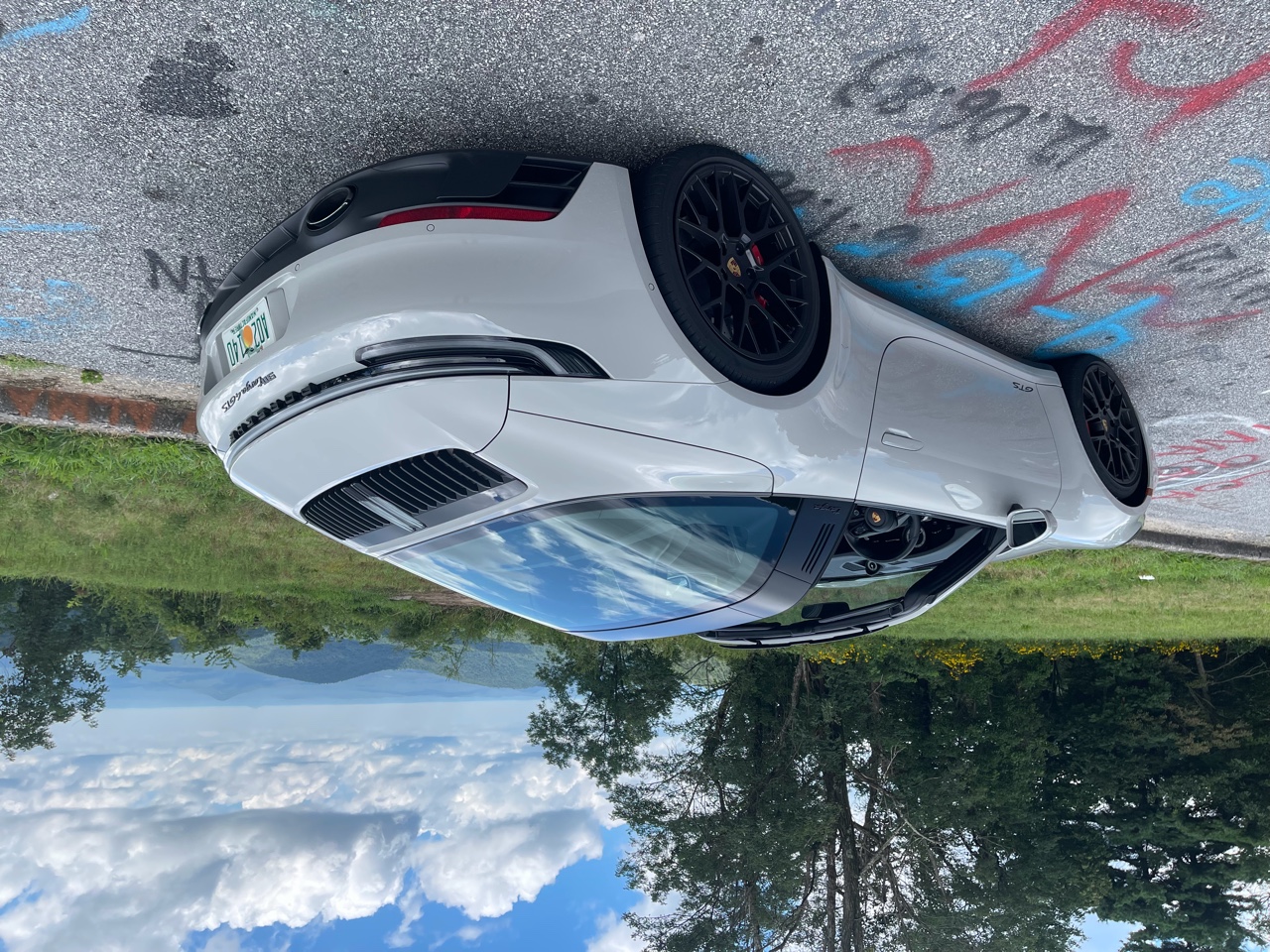
Switching over to the Targa at lunch brought a great open-air dimension to the GTS. It’s funny, I always looked at the Targa as a bit of a quirky, overly complicated poser car. But every time I’ve had a chance to get behind the wheel, I end up enjoying myself far more than I expect. It’s got all the capability of its coupe sibling with the top up, but putting the top down makes the Targa far more enjoyable. With the wind blowing through the cabin, the sensation of speed ramps up a notch or two, upping the fun factor accordingly.
Fortunately for me, my Targa was equipped with the optional Adaptive Sport Seats Plus (18-way) with Memory Package ($3,030) as opposed to the Machiavellian carbon bucket seats. Had it not, the four-plus hours I spent stuck in Atlanta traffic on the drive back would have required some serious chiropractic work.
My Targa gripe (other than the fact mine was equipped with the PDK and not the manual) is that you can’t put the top down while the car is moving. I mean I get it. You can’t really have a piece of glass the size of a medium-sized coffee table hanging out in the wind at 30 mph and expect it to keep doing its job as a piece of glass for long. For those who have never seen it in action, the whole entire rear decklid/window section of the Targa lifts up to allow the targa top to slide underneath. But it still makes putting the top up or down at a traffic light a bit of a game of Russian Roulette: You never know if you’ll have enough time for the roof to fully complete its task. (At least the other drivers around you have a show to watch as they miss their green light waiting for your car to finish up). But other than that, the Targa is a blast and might actually be the one I would pony up for as a weekend mountain getaway car for the wife and me.
To be honest, the only thing from the GT3 I really missed was its nifty new double-wishbone suspension. Driving the GTS strut setup (which is identical to all of the other 911 variants, save the GT3) made me realize just how the GT3’s system completely transforms the car. That ultra-sharp, hi-def, 4K turn-in response that completely dominates the GT3’s handling characteristics is just MIA in the GTS. And no, you can’t just bolt the GT3’s front suspension onto the GTS. Trust me, that was the first thing I asked.
Pricing and Competition
As much as I absolutely love the GT3, the GTS is the car I would probably go spend my money on. It does everything so well. Quick carve up the back roads? Check. Grocery run? Check. Day-long road trip up the coast without needing a brace for shattered bones when you arrive at your destination? Check.
The GTS has a few competitors in the field, with the most comparable one being the Mercedes-AMG GT coupe. It’s no small surprise, as the 911 was the target when the team from Affalterbach developed its car. The Merc is a worthy competitor, but I still find the 911s to be more sporty fun. The GT Coupe is a bit more of a grand-touring car, but frankly, it’s more up to personal preference than quibbling over which one is actually better.
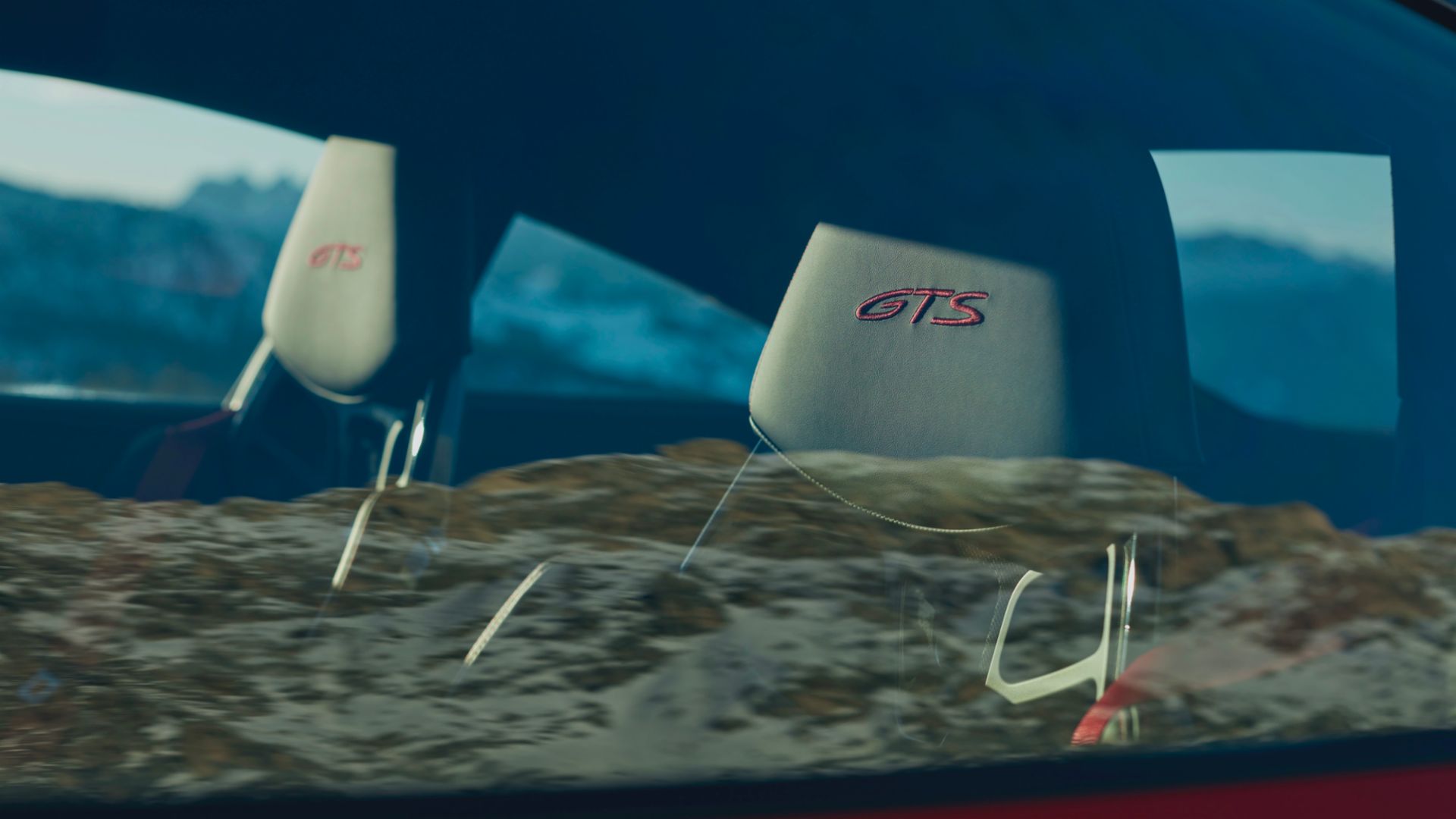
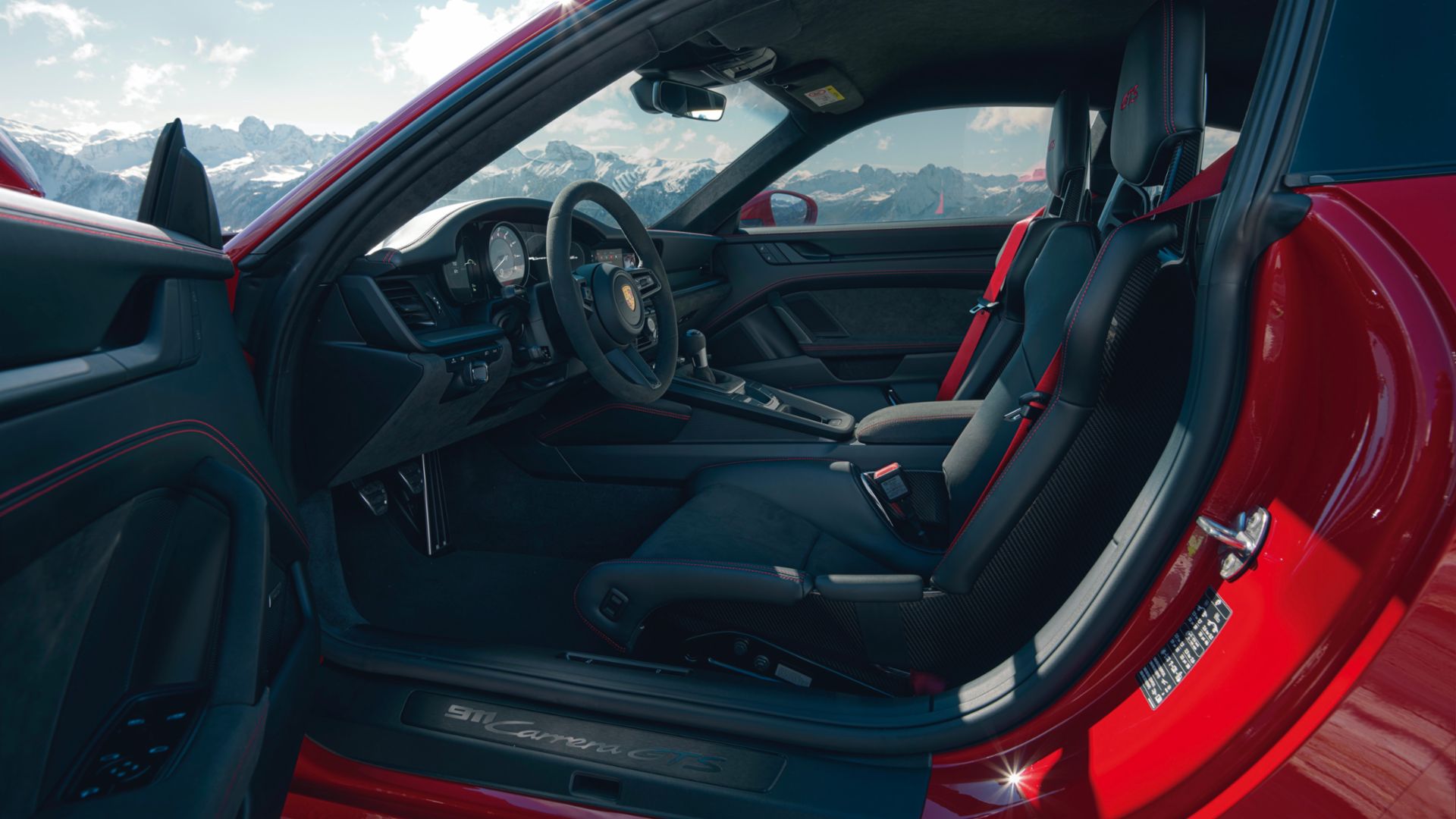
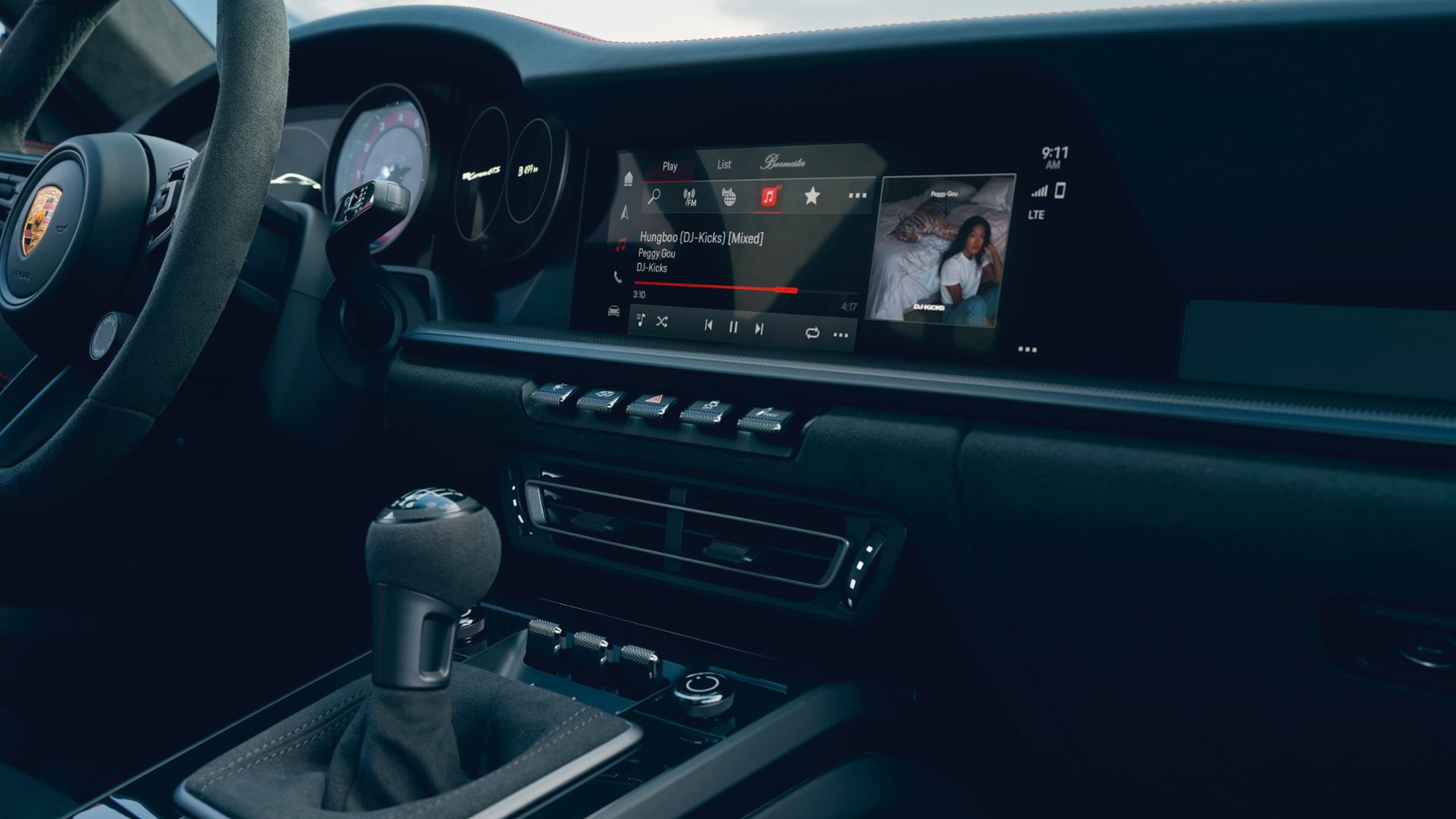
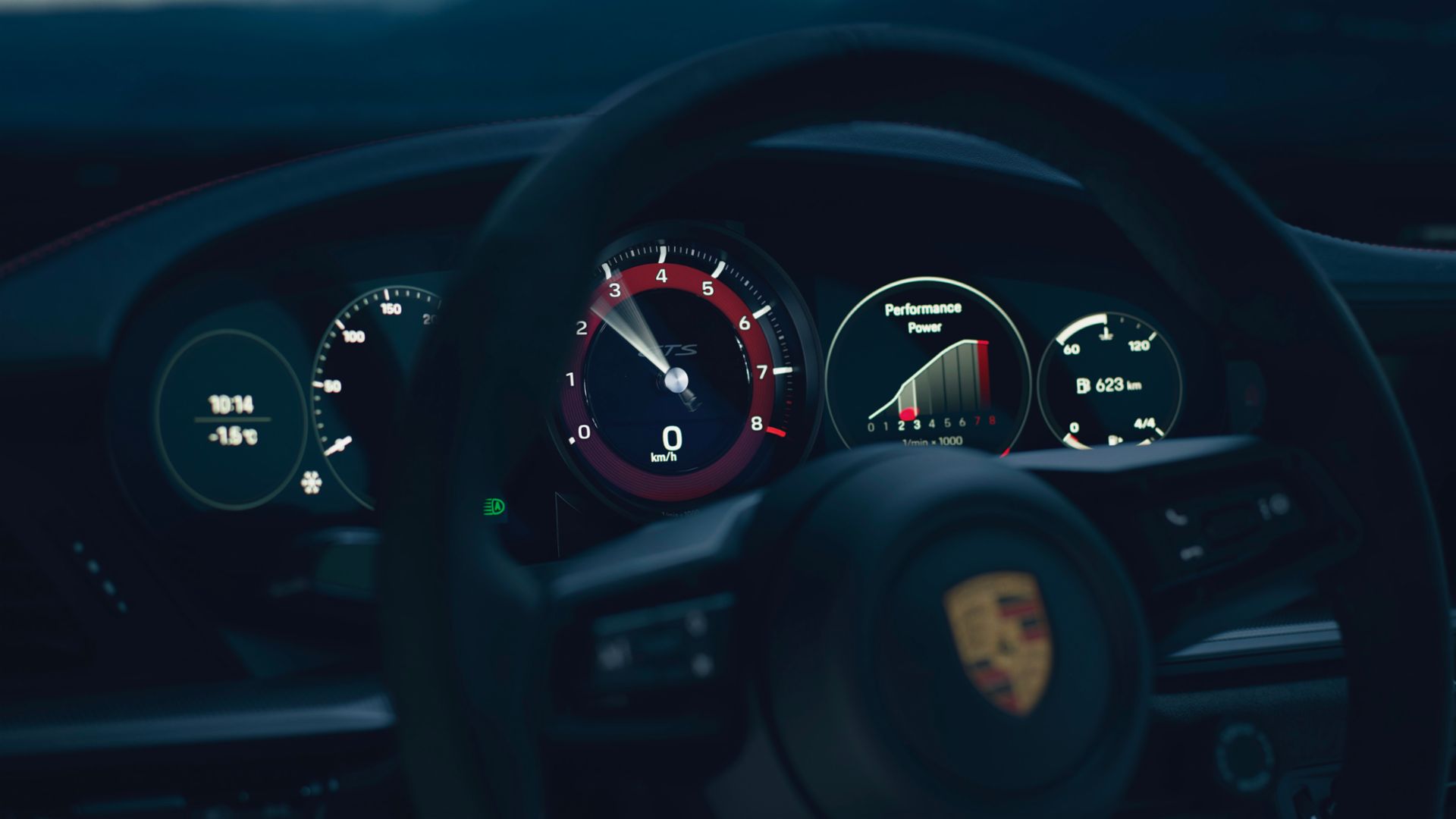
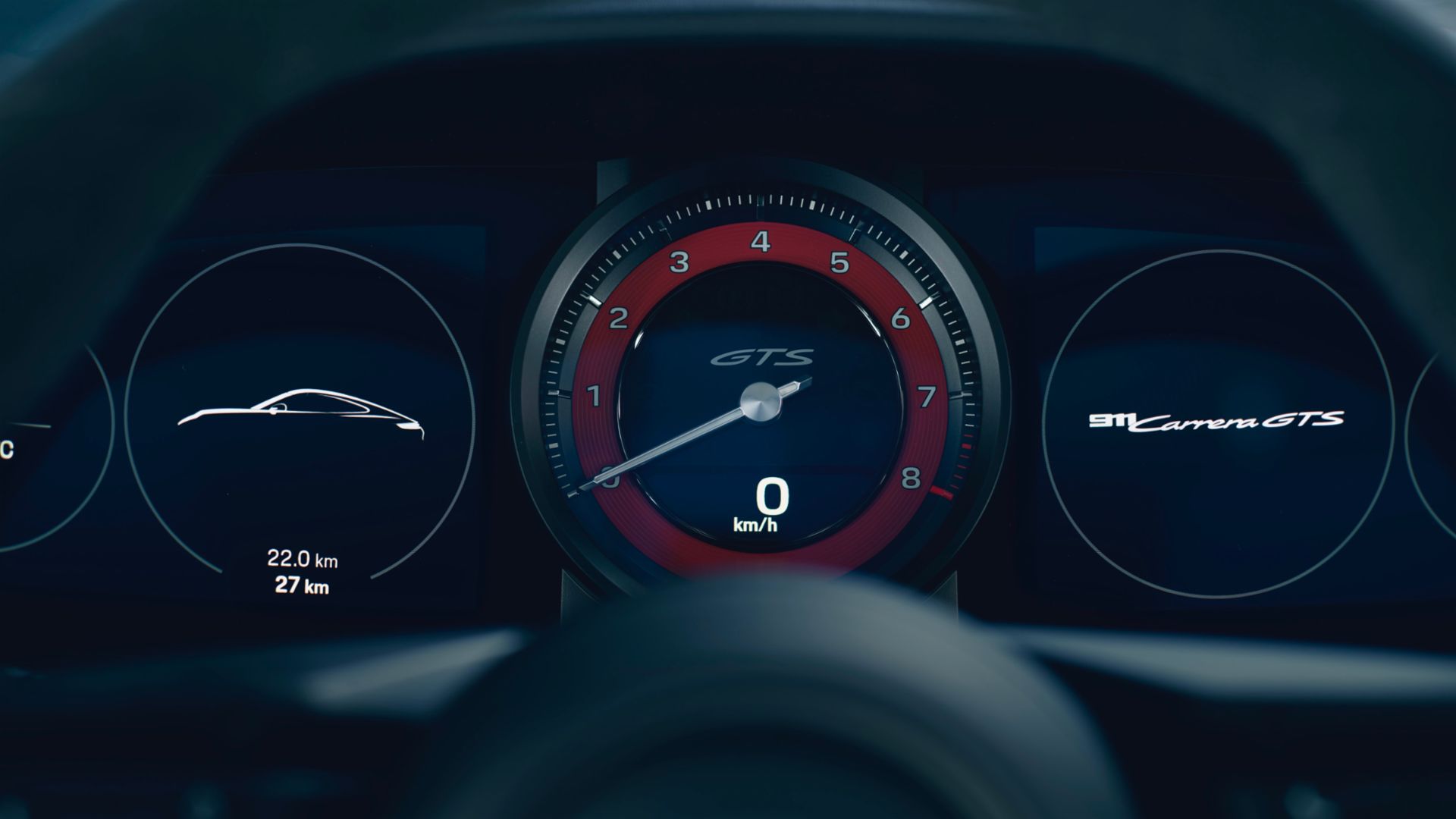
Across the way, the Aston Martin Vantage is more powerful than the GTS, but also is not as sporty—again, leaning to the grand tourer side of things. Out of these three, however, the GTS is the more athletic option, as well as the more practical one. There are rear seats and a usable front trunk.
Verdict
A car—any car—is much more fun to drive the closer you can get to its limit. It’s why, in an era of 1,000-hp supercars, enthusiasts still find Mazda Miatas so much fun. Their limits are so low you can reach them on the drive to the corner grocery store without raising the ire of the local constables. This was overwhelmingly the case of the new 911 GTS.
Clearly, if you have the wherewithal to purchase a GT3 as a weekend fun car, one that sits next to your Turbo S in your six-car garage, then by all means you should do so. But for those of us that are short of either the necessary cash to purchase multiple six-figure cars or garage spaces to put said cars in (or both, in my case) then you should absolutely give the GTS a long hard look.
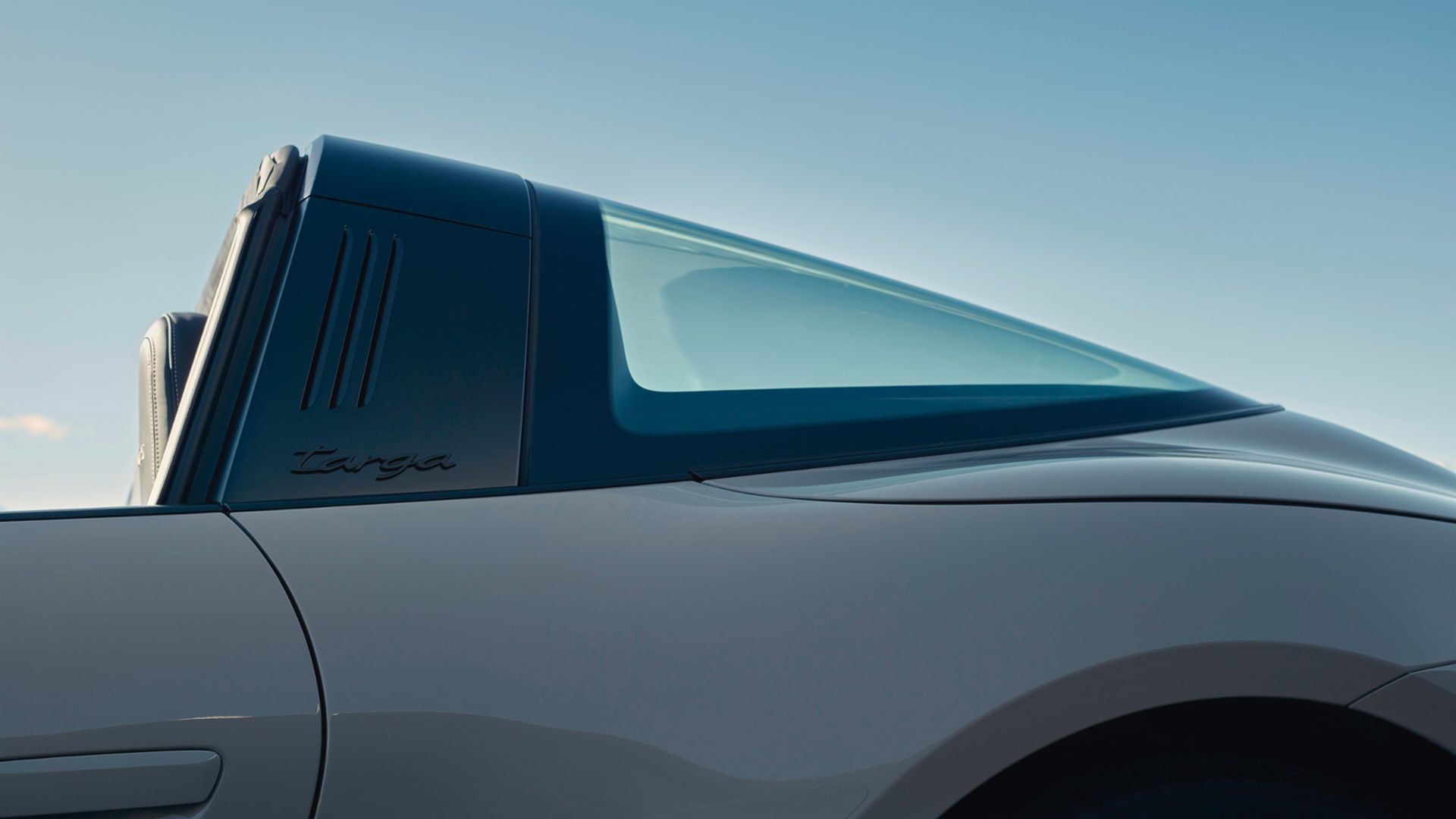
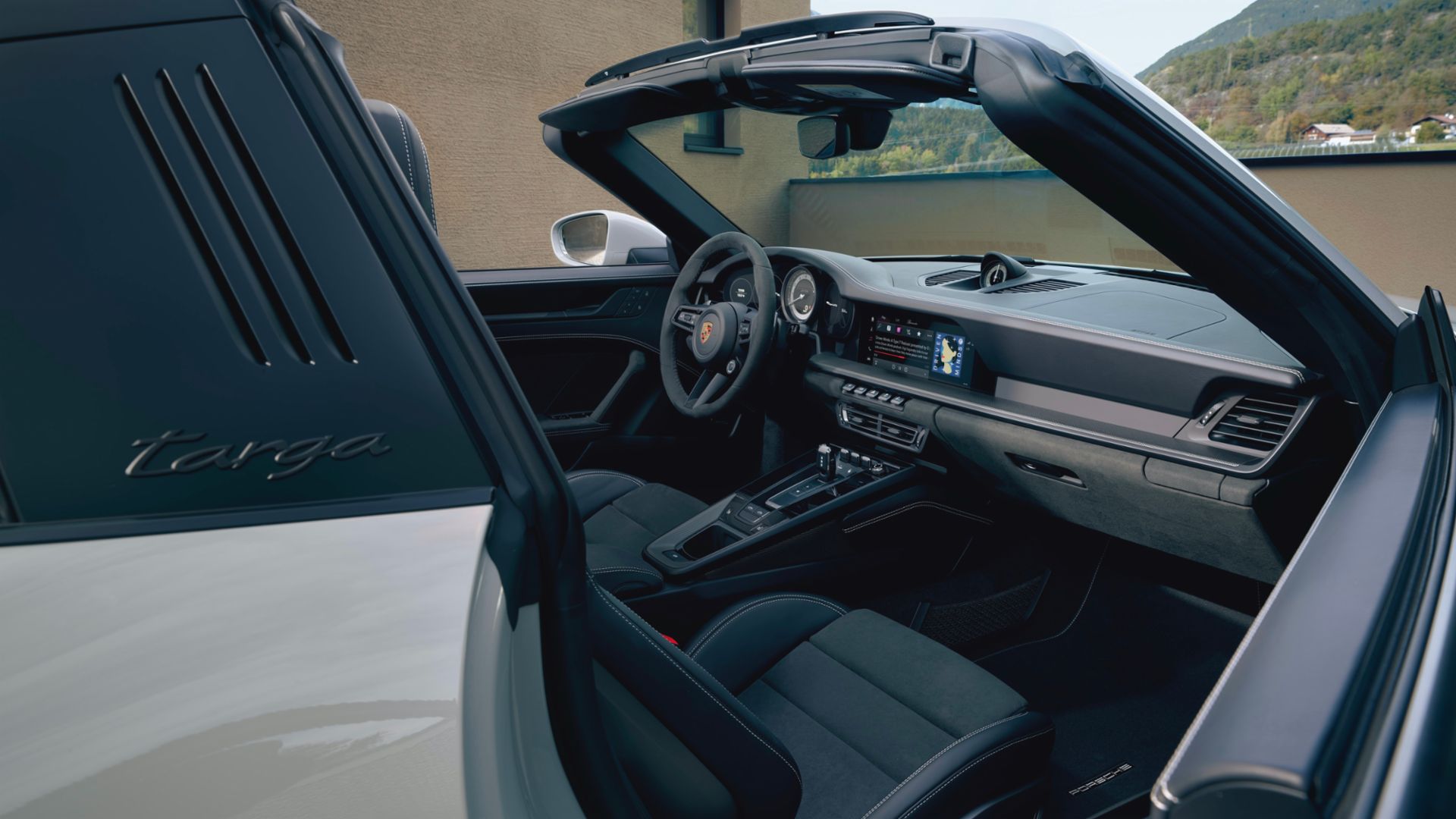
This new GTS is far closer to the GT3 than any that have come before it, but still has the livability of a base Carrera S. The GT3 might get all the attention because it’s the best of the best, but take things down a notch and you’ll see the GTS is for those a little more realistic.
And as much as the GTS compares well to the GT3, the biggest step is up from the base Carrera S. Between the two, the GTS offers more of everything. More power, better handling, better value, and far more enjoyment. It’s about a $20,000 increase in price, but when you’re shopping for a six-figure car what's 20 grand anyways? I kid, but not really.
The fact remains that the GTS is that much better than the S and that much more livable than the GT3. It’s there, in the 911 range, that you’ll find the sweet spot.
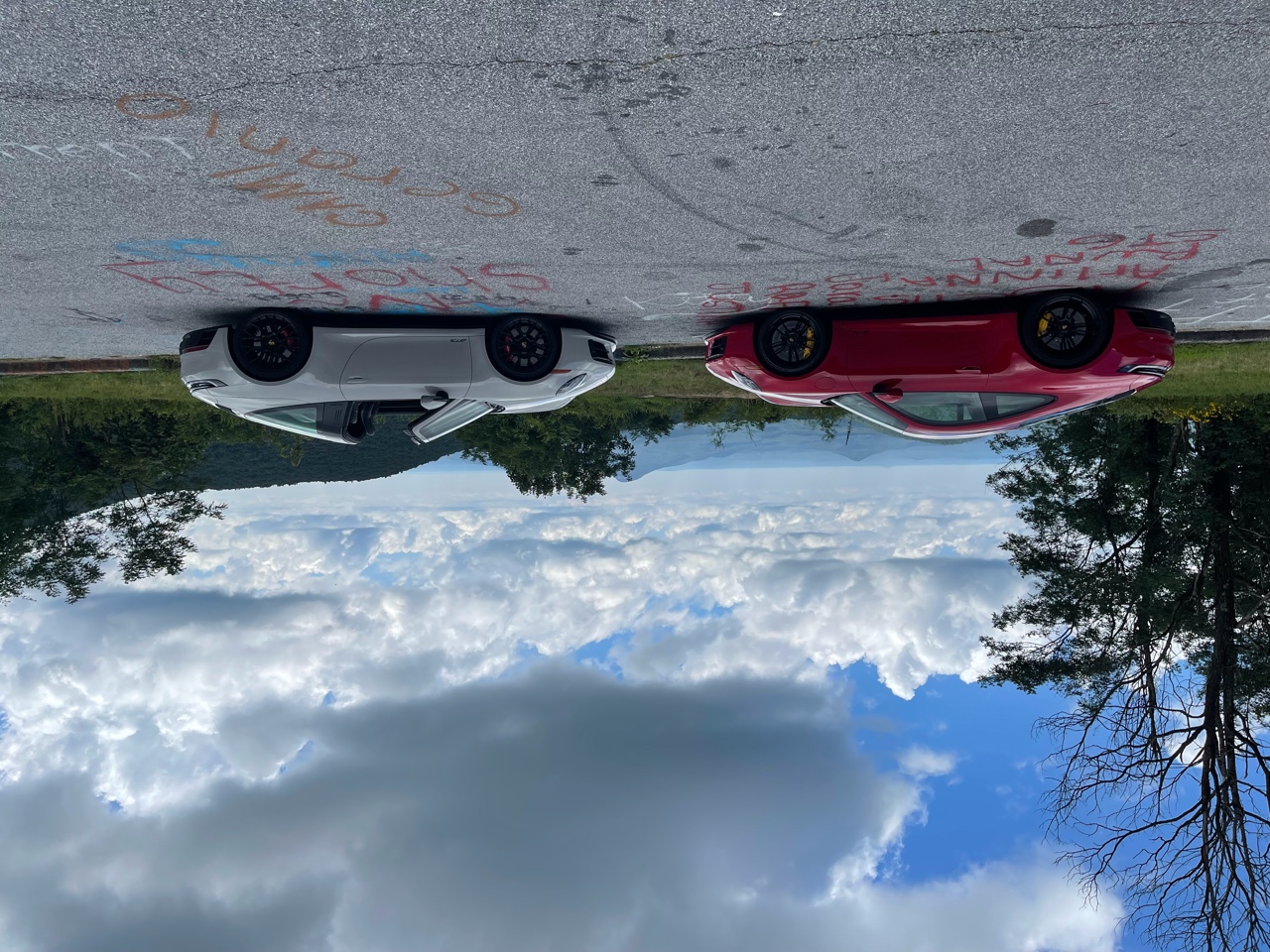
Robb Holland is an American race car driver and automotive journalist. He has competed in the British Touring Car Championship, Pikes Peak, the World Touring Car Championships, and more.
Got a tip? Email tips@thedrive.com.

